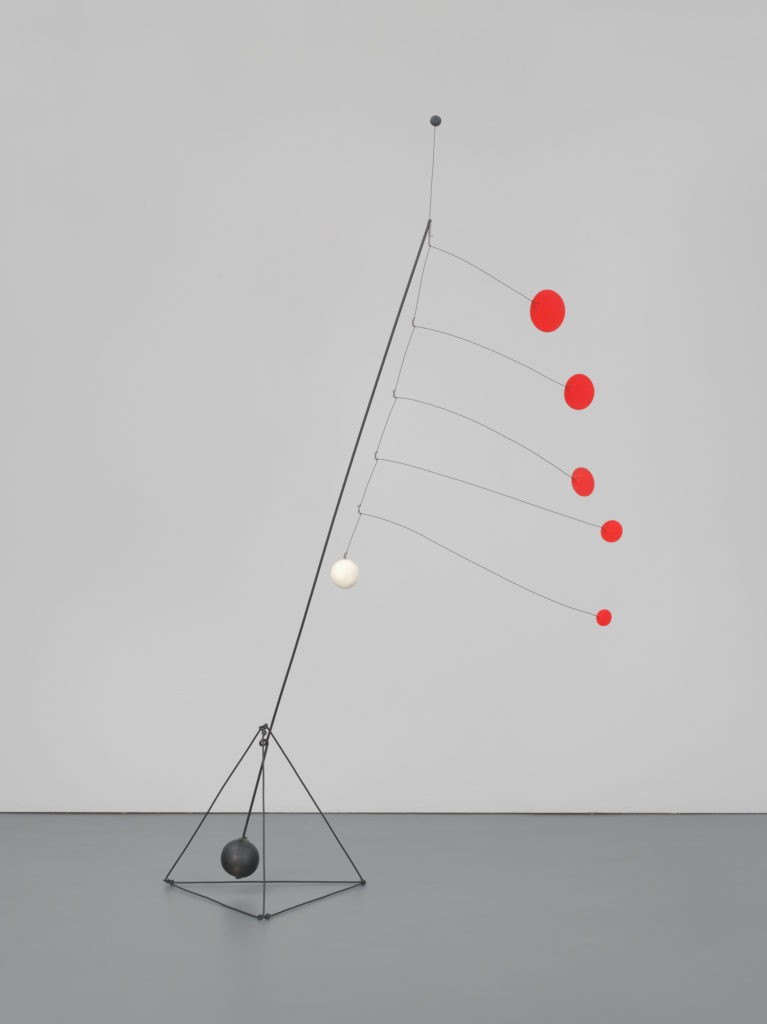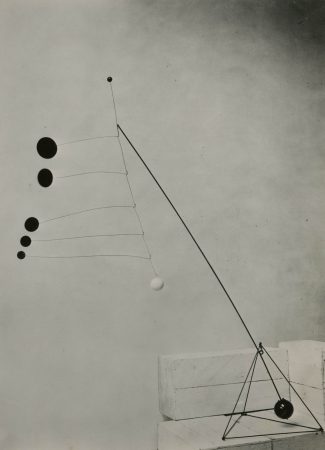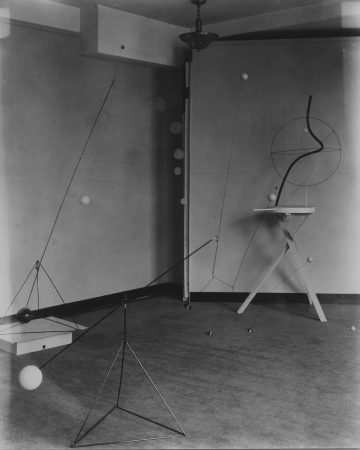



![Untitled (double-sided drawing) [recto] (1943)](https://calder.org/wp-content/uploads/historical-photos/Untitled-double-sided-drawing-recto-1943-450x327.jpg)
Galerie Vignon, Paris. Calder: ses mobiles. 12–29 February 1932.
Solo ExhibitionThe Museum of Modern Art, New York. Alexander Calder: Sculptures and Constructions. 29 September 1943–16 January 1944.
Solo ExhibitionNew Gallery, Charles Hayden Memorial Library, Massachusetts Institute of Technology, Cambridge. Calder. 5 December 1950–14 January 1951.
Solo ExhibitionMuseu de Arte Moderna, São Paulo, Brazil. II Bienal do Museu de Arte Moderna de São Paulo. 15 December 1953–28 February 1954.
Group ExhibitionArts Council of Great Britain, Tate Gallery, London. Alexander Calder: Sculpture–Mobiles. 4 July–12 August 1962.
Solo ExhibitionFondation Maeght, Saint-Paul-de-Vence, France. Calder. 2 April–31 May 1969.
Solo ExhibitionWhitney Museum of American Art, New York. Calder’s Universe. 14 October 1976–6 February 1977.
Solo ExhibitionPalazzo a Vela, Turin, Italy. Calder: Mostra retrospettiva. 2 July–25 September 1983.
Solo ExhibitionMusée National d’Art Moderne, Centre Georges Pompidou, Paris. Alexander Calder: les années parisiennes 1926–1933. 18 March–20 July 2009. Originated from the Whitney Museum of American Art, New York.
Solo ExhibitionMusée Picasso, Paris. Calder-Picasso. 19 February–25 August 2019.
Group ExhibitionCalder offers Sweeney a sculpture from his first show at the Pierre Matisse Gallery, for which Sweeney had written an introduction to the catalogue. Sweeney chooses Object with Red Discs; on principle, he insists that Calder accept a small sum in return for the sculpture. The
Sweeney family enjoys the object immensely and Sweeney’s brother, John, dubs it “Calderberry-bush.”
Following a visit in October of 1930 to Piet Mondrian’s studio, where he was impressed by the environmental installation, Calder made his first wholly abstract compositions and invented the kinetic sculpture now known as the mobile. Coined for these works by Marcel Duchamp in 1931, the word “mobile” refers to both “motion” and “motive” in French. He also created stationary abstract works that Jean Arp dubbed “stabiles.”